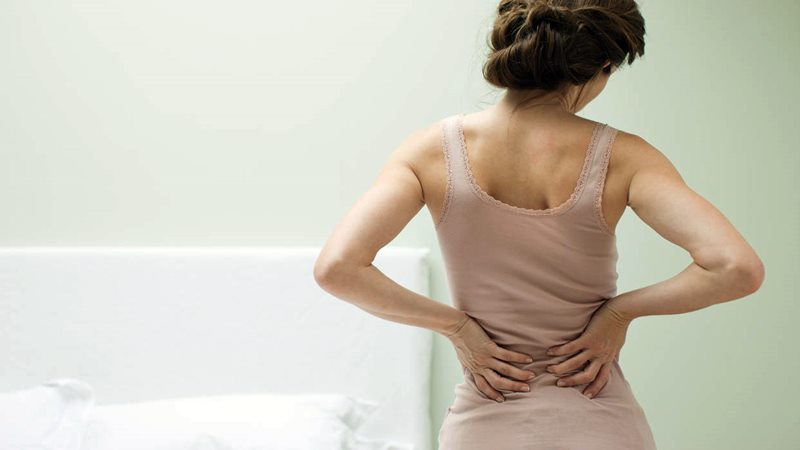You’ve heard it before: sleeping on the floor is good for your back. But is it really? The internet is awash with testimonials from people who claim drastic improvements in their back pain after switching to a hard, flat surface. Yet, medical experts offer nuanced advice, with some advocating for its possible benefits and others warning about potential drawbacks. So, is sleeping on the floor a back pain miracle cure, or just a trendy fad?

Image: 15healthbenefits.org
This article will delve into the complex relationship between sleep surface and back pain. We’ll explore the scientific basis for the potential benefits and drawbacks of floor sleeping, examine the different viewpoints of healthcare professionals, and discuss the importance of individual factors and personal preference.
The Potential Benefits of Floor Sleeping for Back Pain
The idea that sleeping on a hard surface can alleviate back pain stems from the notion of proper spinal alignment. When we lie down, our spine should ideally maintain its natural, S-shaped curve. A firm surface, like the floor, can supposedly promote this alignment by preventing excessive sinking or sagging.
1. Reduced Spinal Stress:
A firm surface can provide greater support and reduce the pressure on your spine, especially if you suffer from conditions like lordosis (excessive inward curvature of the lower back). This lack of pressure can potentially minimize muscle strain and alleviate pain.
2. Improved Posture:
Sleeping on a hard surface may force your body to assume a more neutral posture, promoting proper spinal alignment and potentially reducing muscle tension that can contribute to back pain.

Image: www.mal-au-dos.be
3. Increased Circulation:
Some proponents of floor sleeping argue that it can improve blood circulation by reducing pressure points and allowing for better blood flow throughout the body, especially in the legs and feet. However, more research is needed to confirm this claim.
Potential Drawbacks of Floor Sleeping for Back Pain
While there may be some potential benefits, floor sleeping also presents several challenges that could worsen back pain.
1. Lack of Comfort and Support:
A hard floor surface can be unforgiving, especially for people with pre-existing back problems or sensitivity to pressure points. The lack of cushioning can lead to discomfort, aches, and even exacerbate existing pain.
2. Uneven Surface:
Unlike a properly designed mattress, a floor surface can be uneven, creating pressure points that can lead to pain and discomfort. Additionally, the floor may be too cold for some people, leading to muscle tension and discomfort.
3. Risk of Injury:
Falling off the bed is a common occurrence, but it becomes a more serious matter when sleeping on the floor. The risk of falling and injuring your back is much higher on a hard surface.
Who Might Benefit from Floor Sleeping?
Despite the potential drawbacks, some people may find relief from floor sleeping, particularly:
- Individuals with mild back pain and no underlying conditions.
- People who prefer a firm surface and find traditional mattresses too soft.
- Those who are willing to experiment with different sleeping positions and find what works best for them.
Who Should Avoid Floor Sleeping?
For others, floor sleeping might not be the best choice, particularly individuals with:
- Severe back pain or conditions like spinal stenosis.
- Arthritis or other joint pain.
- Limited mobility or difficulty getting in and out of bed.
- Pregnancy or postpartum recovery.
Alternatives to Floor Sleeping for Back Pain
If you’re considering floor sleeping for back pain, it’s crucial to consult with your doctor or a physical therapist to ensure it’s safe and appropriate for you. They can provide personalized recommendations and help you explore alternative options, such as:
- Adjusting your mattress: Invest in a supportive mattress that accommodates your body shape and sleeping preferences.
- Using a firm mattress topper: A firm topper can be placed on an existing mattress to provide additional support.
- Employing proper sleep hygiene: Maintaining consistent sleep schedules, creating a relaxing sleep environment, and avoiding caffeine and alcohol before bed can improve sleep quality and reduce back pain.
- Engaging in physical therapy: Stretching exercises and strengthening routines can help improve posture, alleviate muscle tension, and reduce back pain.
Does Sleeping On Floor Help With Back Pain
The Bottom Line: What to Do Next
Sleeping on the floor might help some people experience temporary relief from mild back pain, but it’s not a guaranteed solution. The effectiveness of this approach for treating back pain varies significantly depending on the individual, the severity of their condition, and other factors.
Instead of jumping on the floor-sleeping bandwagon, consult with a healthcare professional to explore solutions tailored to your specific needs and ensure that any changes you make to your sleep surface are safe and beneficial. Remember, there is no one-size-fits-all approach to back pain management, and a holistic approach that combines lifestyle modifications, physical therapy, and medical treatment may yield the best results.






